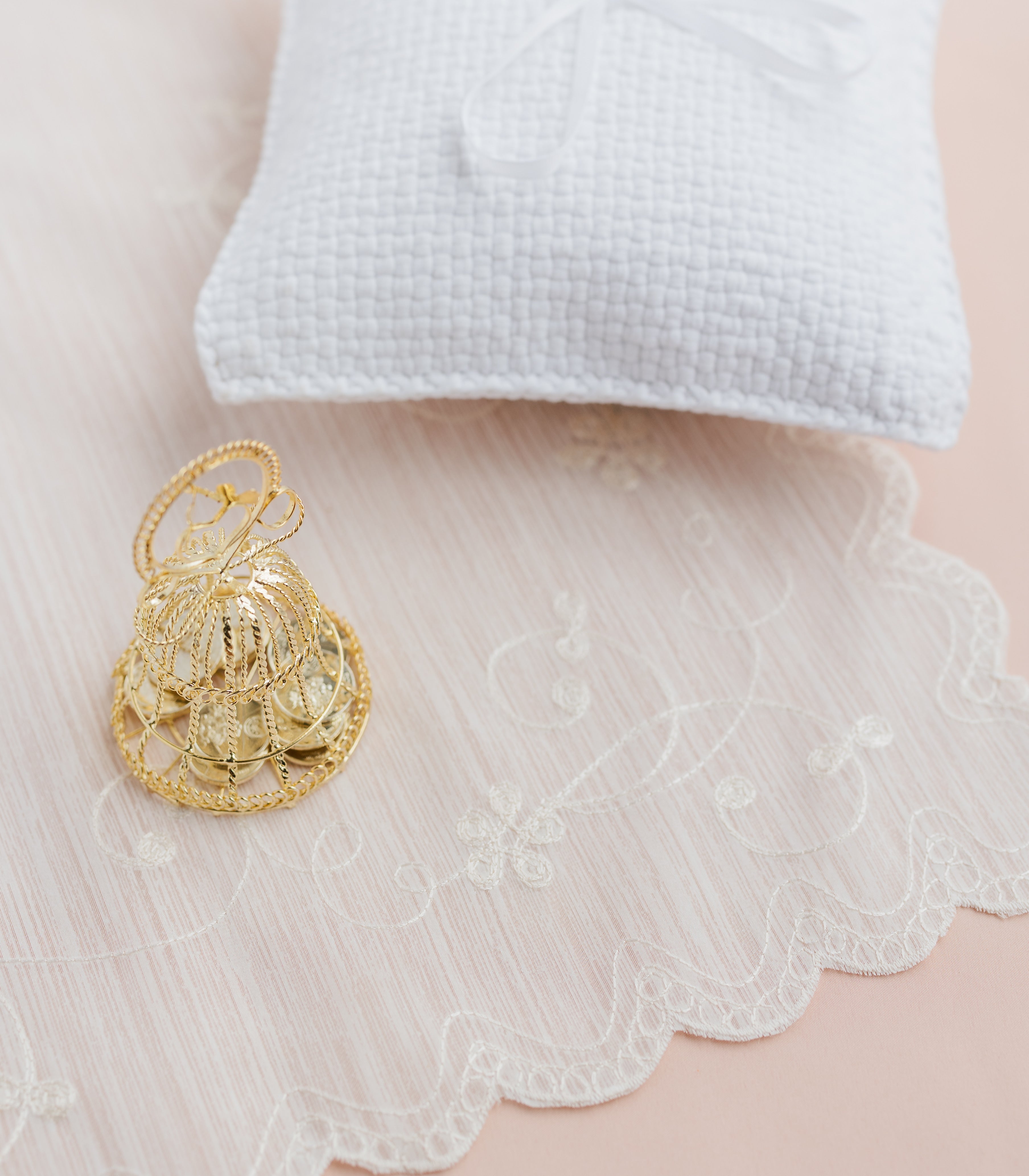After a Filipino wedding ceremony filled with happy tears and romantic moments, a memorable reception is all about involving your guests! One way Filipino couples light up the dance floor with family and friends is through the money dance.
Also known as the prosperity dance, or sabitan ng pera in Tagalog, it serves to usher in financial abundance in a couple’s marriage. For wedding guests, it’s a fun moment full of candid merriment and well-wishing.

Filipino newlyweds in the middle of their money dance, looking festive in a crown, sash, and garlands made of cash. (Credit: The Blue Leaf)
Practiced around the world, the money dance’s origins can’t be traced back to one place, with its details varying widely per culture. This includes everything from the bouncing bridal polka in Poland to the lavish money spray in Nigeria.
In the Philippines, the prosperity dance inspires a competitive and creative atmosphere. Dance partners pin their cash offerings into ambitious fashions for the newlyweds to wear. For one night only, party guests witness the couple’s Ninang and Ninong (godparents) and closest relations transform into couturiers as they design fanciful crowns and capes made of money.
The secret to managing the spontaneity (borderline joyful chaos) of the Filipino money dance is ample preparation. Sinta & Co. presents some important details to maximize the fun for everyone and avoid any missteps.
Preparing For The Dancefloor

With the Filipino diaspora all over the world, it’s now more common to see foreign currencies pinned during the money dance. (Credit: J. Layno Photography & VIdeography, FilipinoTimes.net)
While planning your wedding reception, the first question you want to ask before including the money dance is the purpose it serves: Is it practical or purely symbolic?
In Filipino culture, the significance of the money dance goes both ways: as a way to contribute to the couple’s future or a bid of good fortune.
Once this is decided, it’ll be simpler to invite and inform guests about their participation in the wedding reception. It’s important to advise party-goers ahead of the big day so they can prepare, too.

A closer look at the money dance. Red envelopes are a more discreet way of pinning your cash gift. (Credit: Weddings in the Philippines.com)
In terms of actual choreography, it’s quite straightforward when done traditionally: guests line up in two queues, with everyone holding a pin and waiting their turn to dance with the bride or groom.
In the Philippines, the laidback attitude of “bahala na!” (come what may) prevails. The awaiting line of dance partners is often eschewed in favor of being spontaneous. In this version, the couple begins their dance in the middle of the ballroom. As the music plays, guests are encouraged to approach the newlyweds on their own. They’re free to decide when to take their turn on the dance floor and where to attach their cash一the veil, gown, barong, or pants!
The fun escalates with creativity. The couple can choose to have sashes, crowns, necklaces, and other accessories made prior to the reception, so guests know exactly where they can pin their money. This makes for a rather festive photo-op, too.
Taking The Money Dance A Step Up

A natural concern for brides and grooms about the money dance is how to preserve their wedding gown and barong amid all the pins. (Credit: Weddings in the Philippines.com)
Now you have the basics down to do the money dance at your own wedding reception, it’s time to add some flair! Take your money dance to the next level through the following suggestions:
- To avoid damaging your gown or suit with pins, consider having your dance partners use large paper clips or clothespins instead.
- For something more whimsical, yet coordinated, you can have people pin the money to a sash, garland, cape, or crown.
- A spicier option would be to wear a garter so guests can insert the money there instead.

You may want to consider having a member of your entourage collect the money in a basket or pouch. (Credit: Etsy, Bellperiwinkle)
- If hygiene is an important factor for you, you can direct your guests to a designated collector. This can be a trusted member of your entourage who can collect the money for you in a basket or pouch. You can even ask the collectors to sanitize the money in another room afterwards.
- Another hygienic option is to go digital! For instance, one couple in the Philippines made headlines by going cashless for their money dance. Instead of the usual choreography, the pair flashed a QR code on-screen instead, allowing guests to wire their money directly to their bank accounts. By letting guests send their money digitally through apps like Paypal or Venmo, all you’ll have to focus on are your moves and dance partners.

A couple who made the headlines for doing a “cashless” money dance, by flashing a QR code and account details on-screen instead. (Credit: FemaleNetwork.com, Al Martinez)
At its very core, the prosperity dance is an imaginative and interactive way to tackle the more practical side of a wedding: jump-starting a life built with your partner.
Want to incorporate more cultural traditions into your Filipino wedding?
Download our guide to the candle, cord, coins and veil for your Filipino ceremony. Subscribe to our email newsletter to get it straight to your inbox. Sign up below.Lawrence Garcia

Lawrence is a writer and digital creative from Manila, who's passionate about advertising, books, and fashion history. While working on getting certified as a digital marketer, he's usually binge-watching Heartland and RuPaul's Drag Race on Netflix. You can get in touch with him via email at rencegarcia95@gmail.com



Leave a comment